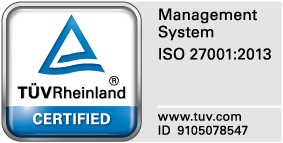Depreciation in real estate companies – how should the January and April 2025 rulings of the Polish Supreme Administrative Court be interpreted?
Two divergent sets of rulings issued by the Polish Supreme Administrative Court (NSA) in January and April 2025 interpret Article 15(6) of the Polish Corporate Income Tax Act (CIT) in completely different ways. The former impose on real estate companies a limit based on “hypothetical” accounting depreciation, whereas the latter state that, if no accounting depreciation is recorded, the limit simply does not apply. This article clarifies both approaches, outlines their implications for CIT settlements for the years 2022–2024, and provides guidance on how to prepare a company for a potential dispute with the Polish tax authorities.
In this article:
Background of the dispute and the stance of the tax authorities
With the introduction of the “Polish Deal” (Polski Ład), Article 15(6) was added to the Polish CIT Act, effective from 1 January 2022. This provision limits the amount of tax-deductible depreciation for real estate companies to the level of accounting depreciation “made in accordance with the provisions on accounting”. Polish tax authorities have so far maintained that if a company – applying International Financial Reporting Standards (IFRS), in particular IAS 40 on investment property, or fair value measurement – does not account for depreciation in its financial statements, the tax depreciation limit is effectively PLN 0.
Supreme Administrative Court rulings of 28 January 2025 – the “hypothetical depreciation” concept
Case numbers: II FSK 788/23, 789/23, 987/23, 1086/23, 1652/23
The court rejected the literal interpretation advocated by the tax authorities, but also dismissed the taxpayers’ argument for complete discretion. The court held that:
- Article 15(6) applies even when no accounting depreciation is actually made.
- A company should determine a hypothetical accounting depreciation – as if it were keeping its books under the cost model (using the rate from Appendix 1 of the Accounting Act × initial value of the asset).
- The amount of this fictitious depreciation then becomes the upper limit for the tax-deductible expense.
These January rulings thus introduced a “calculate and compare” model, permitting depreciation as a tax expense – but only up to the amount of virtual depreciation.
Supreme Administrative Court ruling of 3 April 2025 (II FSK 756/23) – complete departure from the limit
In a dispute involving a company that had commenced tax depreciation before 2022 and accounted for its properties at fair value in its financial statements, the NSA held that Article 15(6) does not apply at all if no accounting depreciation is recorded – there is simply “nothing to limit”. The court also highlighted the absence of transitional provisions that would otherwise deprive the taxpayer of the right to continue ongoing depreciation.
Why such discrepancy?
The January benches sought a compromise to uphold the restrictive nature of the provision, whereas the April bench applied a literal interpretation: the restriction only applies where accounting depreciation exists and can serve as a benchmark. The lack of a consistent judicial approach means that taxpayers must closely monitor future case law and – until a resolution by way of a resolution or legislative amendment – be prepared for two competing interpretations.
Practical consequences for real estate companies
- If accounting depreciation is recorded – apply a 1:1 limitation.
- If no accounting depreciation is recorded:
- the January approach (hypothetical depreciation), or
- the April approach (no applicable limit).
Choose between:
This choice affects both the deductible expense and the risk of dispute.
Recommended actions
- Inventory all properties measured at fair value/IAS 40.
- Run simulations of hypothetical depreciation for the January approach.
- Analyse statute of limitations and evaluate benefits of potential CIT corrections for 2022–2024.
- Document the tax position – explain adopted methodology and calculations.
- Monitor the position of the Ministry of Finance – no official response has yet been issued regarding the rulings.
The January rulings of the Polish Supreme Administrative Court opened the way for recognising depreciation in real estate companies based on a “hypothetical” limit, while the April ruling offered an even more favourable interpretation – stating that no limit applies where no accounting depreciation exists. Uncertainty regarding the final line of jurisprudence and the absence of a position from the tax authorities means that companies should act with caution: prepare parallel calculations, strengthen documentation, and only consider amending past returns after carefully assessing the risk of dispute and the applicable statute of limitations.
If you have any questions regarding this topic or if you are in need for any additional information – please do not hesitate to contact us:
CUSTOMER RELATIONSHIPS DEPARTMENT

ELŻBIETA
NARON-GROCHALSKA
Head of Customer Relationships
Department / Senior Manager
getsix® Group
***














